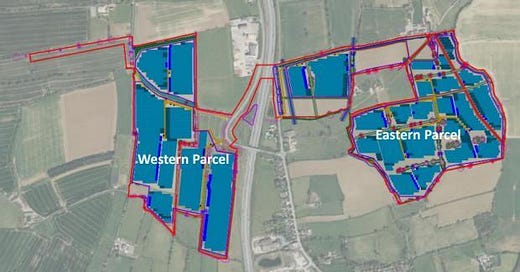Large solar farm straddling A1(M) set for approval
A large solar farm is set to be approved in the North Yorkshire countryside within a few fields of a solar scheme described as the Yorkshire’s largest
North Yorkshire Council members will be recommended to approve plans for a 39.3MW solar scheme on 80 hectares of agricultural land to the north of Brompton-on-Swale when they meet next week.
Brompton Solar Ltd wants permission to build the scheme on two parcels of land on either side of the A1(M).
The western edge of the proposed green energy site lies within 400m of the edge of the existing Skeeby solar farm, which was Yorkshire’s largest when it went live last year.
The cumulative impact on the area of the proposed development was raised as a concern by Brompton-on-Swale Parish Council in an official objection to the scheme.
The issue was also raised by members of the public, whose other objections included the visual impact of the site and the loss of good agricultural land, with the majority of the application site classed as ‘best and most versatile’ land.
But a report for councillors noted that there was a strong national support for renewable energy schemes.
Planning officer Emma Howson said in the report: “The proposed development would have a capacity of 39.3MW of energy and as set out in the accompanying planning statement, can produce enough clean, renewable energy to power approximately 120,000 homes.
“The importance of renewable energy and solar development as part of the UK’s energy mix is considered to be a key component in
decarbonising the power system.
“The contribution from this development therefore attracts substantial weight in favour of the development.”
The officer said Natural England had been consulted and had not raised any objections on the cumulative impact.
The report states that a key factor in the choice of location is the distance to the distribution network, with the scheme connecting directly into the existing substation near Skeeby.
Recommending the application is approved, the officer added: “An absence of harm with regard to matters such as archaeology, highways, residential amenity and flood risk are neutral factors that neither weigh in favour, or against the proposal.
“It is therefore considered that the development would not result in significant harm that would outweigh the substantial public benefits of a renewable energy scheme.”
The application will be debated by members of the council’s strategic planning committee on Tuesday next week.





